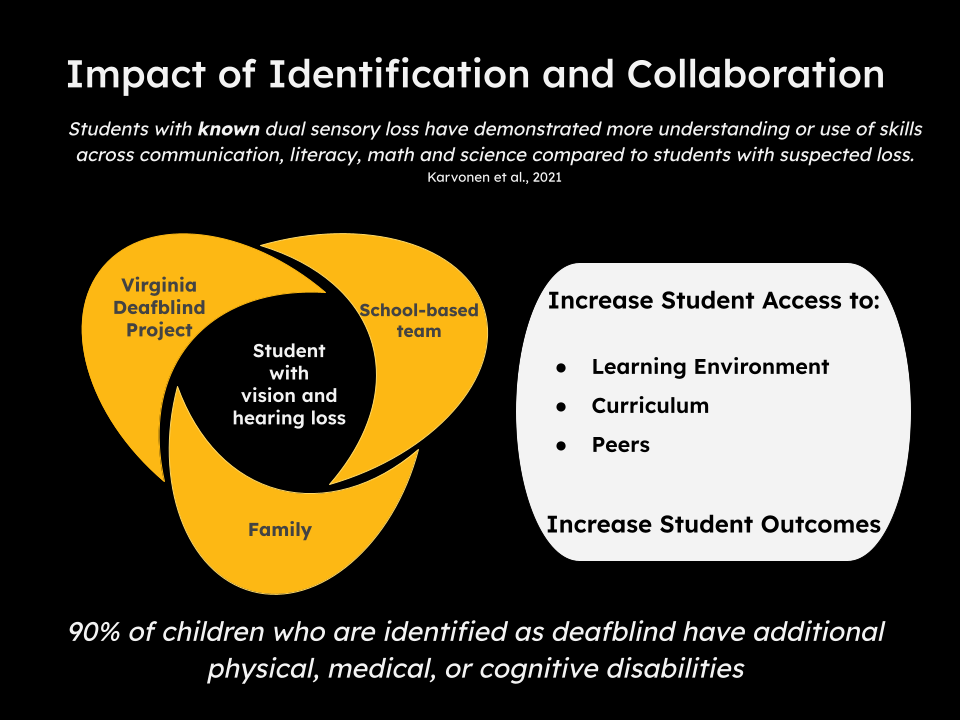Childcount
Text on Graphic: Impact of Identification and Collaboration - Students with known dual sensory loss have demonstrated more understanding or use of skills across communication, literacy, math and science compared to students with suspected loss. Author - Karvonen et al., 2021. 90 percent of children who are identified as deafblind have additional physical, medical, or cognitive disabilities. Graphic indicating that the support structure for a student with vision and hear loss include the following: Virginia Deafblind Project, School-based team, and family. If you increase the student's access to the learning environment, curriculum, and peers you increase student outcomes.
Each year, The Virginia Deafblind Project conducts a child count to identify the children and young adults (birth to 21 years) in Virginia who have both vision and hearing loss. This is separate from the Special Education December 1 Child Count, which counts children as deafblind only when this is their eligibility category. This is important because nearly 90% of children and young adults who are deafblind have additional disabilities. Our project uses the Child Count to connect educational teams, including families, with trainings, information, and networking opportunities related to deafblindness.
For more information on the National Child Count, please visit the National Center on Deafblindness
The Child Count serves to meet federal grant requirements for both the state and national technical assistance projects. It serves as a common data collection and reporting mechanism for use across the country in order to identify trends and needs in deafblindness. Understanding trends helps to guide the trainings and supports needed nationally.
Child Count FAQs
Q: My child has vision loss but does not receive vision services. Can he/she still be on the Child Count?
As long as vision and/or hearing impacts their access to education, they can be eligible to be on our Child Count and receive support from the VDBP.
Q: I think my child has a vision loss, but it is not diagnosed yet. Can he/she still be on the Child Count?
The child can be on our Child Count under the category of “Further Testing Needed” up to 1 year while the team works on getting a diagnosis. For that year, the family and team can receive support from the VDBP.
**All children diagnosed with progressive loss, such as Ushers Syndrome are eligible for the Child Count***
For more information on the December 1 Deafblind Child Count, please contact Hilary Hodes at hhodes@vcu.edu.
